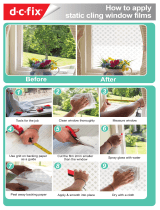
Mamiya 7II, the ultimate 6x7
rangefinder camera .................................3
Nomenclature Parts ................................4
Camera Body ...........................................4
Lens ...........................................................6
Viewfinder display ...................................7
Inserting Battery ......................................8
Power ON/OFF and
Shutter Release Button ..........................8
Battery Check ...........................................9
Mounting/Removing Lenses ................10
Closing the light shield curtain ..............10
Removing camera body cap .................10
Mounting lens ..........................................11
Removing lens ........................................12
Precaution for mounting/
removing lenses ......................................13
Camera Functional Test ........................14
Before Loading the Film .......................15
Setting the film speed ............................15
Opening/closing the back cover ...........15
Setting the film type ................................16
Memo clip ................................................16
Loading the Film .....................................17
Taking Photographs ..............................20
AE (Automatic Exposure) Photography
20
Manual Photography ..............................22
Focusing the Lens ..................................24
Photographic area covered ...................25
Unloading the film ...................................27
Photographing to conform
to purposes ..............................................28
AE Lock(AEL) Photography ..................28
Self-Timer .................................................29
Time Exposures ......................................30
Flash Photography .................................31
Multiple exposure mechanism ..............32
Infrared Photography .............................32
Exposure Compensation .......................33
Diopter Correction Lenses .....................34
Depth-of-Field ..........................................34
How to Hold the Camera .......................35
Neck strap . . . . . . . . . . . . . . . . . . . . ....35
Troubleshooting ......................................36
Lenses .......................................................37
Accessories .............................................39
System chart ............................................40
Specifications ..........................................41
Common Sense Camera Care and
Practice .....................................................42
2






















